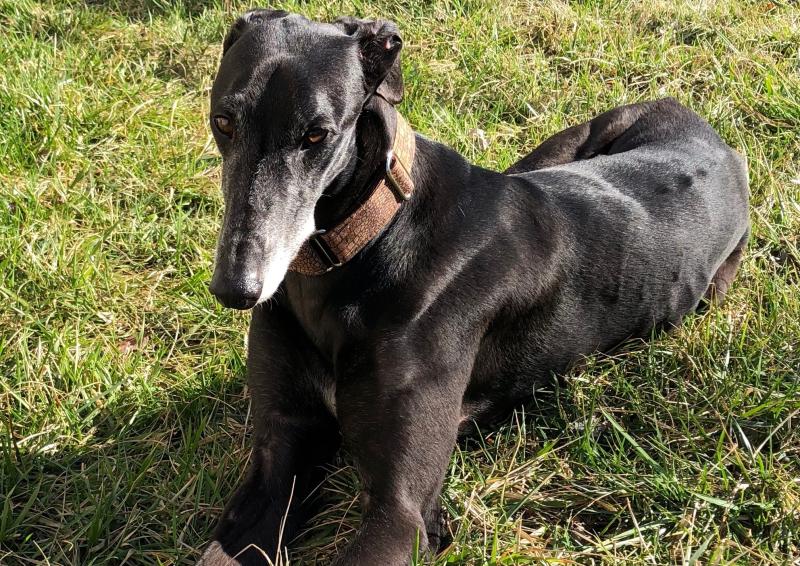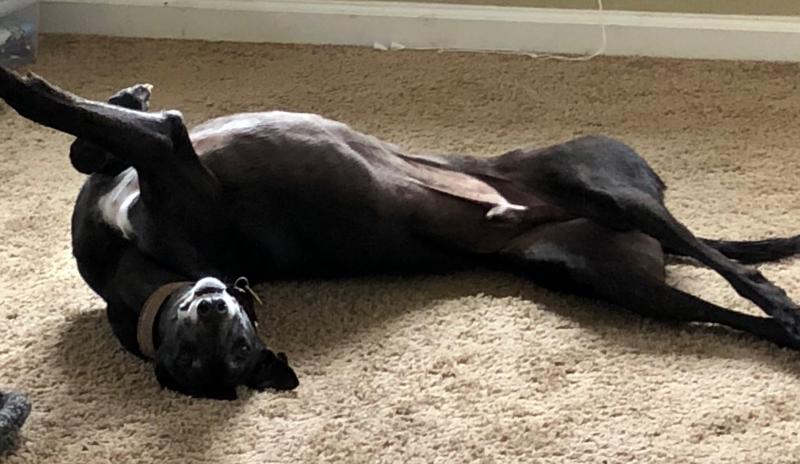Why Does My Dog Eat Grass?

I recently adopted a greyhound named Dogtor, Doc for short. Doc is a wonderful dog, who has what I thought to be a strange habit of grazing in my backyard. I feed him a high-quality grain-free diet with plenty of snacks, yet this habit persists. After sifting through sources of a wide range of credibility, I discovered that Doc’s grazing is quite normal; I even purchased an inexpensive wheatgrass growth bed to make sure Doc stays healthy while doing so. Beyond using this blog post as an opportunity to post dog pictures, I wanted to share my findings on the grass-eating habits of dogs and other house pets.


It appears that nearly all omnivorous (animal- and plant-eating) pets, including housecats and canines of all breeds, eat grass for dietary reasons. The two most common causes of this behavior are to obtain fiber and nutrients. Like our pets, humans also crave particular foods to obtain nutrients. Many craving-to-nutrient charts have been published by nutritionists (and less reputable sources, so be careful!) citing examples like low magnesium levels resulting in chocolate cravings, and low nitrogen levels resulting in cravings for complex carbohydrates. While I’m sure we can all relate to chocolate cravings, what nutrients do grasses contain that motivate our furry friends to take a bite?
While it may seem obvious, grass is quite high in fiber. Fiber is an assortment of indigestible plant parts, often cellulose. Cellulose is what makes up plant cell walls and is actually a bunch of glucose (sugar) molecules specially bonded together; it is indigestible by humans because we lack the enzymes necessary to break these special chemical bonds. Our inability to digest fiber gives it various, critical roles in digestive health. Dogs also lack the enzymes necessary to digest fiber, imparting similar roles in canine digestive health. In addition to providing the desired nutrients and fiber, dogs also have a notoriously poor sense of taste resulting in grass being an easily available, and surprisingly appetizing nutritional supplement.
Grasses and other green plants are also high in chlorophyll – the green substance responsible for absorbing sunlight to be converted to plant food. The reaction center of all chlorophylls contains a magnesium ion bound by nitrogenous chlorin or porphyrin groups. This means that Doc is likely eating grass to obtain additional magnesium and/or nitrogen in his diet. Given the low quantities of chocolate in his diet (for obvious reasons) and his grain-free food, I decided this was a good excuse for me to set up some hydroponics in the house.
Figure 2. Structure of chlorophyll c2 demonstrating a double porphyrin containing the magnesium reaction center.
To preserve your dog’s health while grazing you may want to consider growing wheat grass wherever you have room. This is primarily due to the chemicals most of us apply to our lawns to keep them green and pest-free. Most fertilizers contain excess plant nutrients – and while most grass varieties adapt well to these excesses, your furry companion does not. I personally apply a flea and tick spray to my yard in the spring time to prevent the transmission of disease to Doc and myself. While I have not had my grass tested, this pesticide combined with the occasional application of a fertilizer in the sparse areas of the yard leads me to believe that my grass has higher levels of nutrients and pesticides than Doc should be consuming on a regular basis. To facilitate his natural plant curiosity – and appease mine – I began growing wheatgrass hydroponically in a small corner of my house. The careful balancing of available nutrients in the hydroponic system enables healthy plants as well as a healthy dog.
Written by TPS fellow Parker Evans
Sources:
